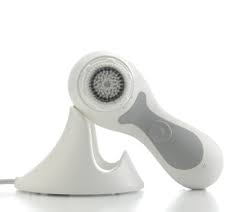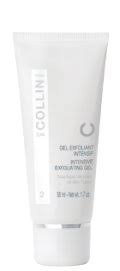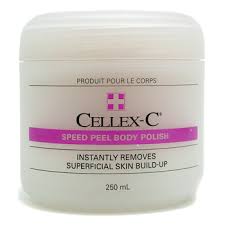Ah, the wonders of Alpha Hydroxy Acids. AHAs can smooth deep wrinkles, refine pore size, lighten pigmentation, and help clear up acne & scarring. There are several AHAs: Malic from apples, Lactic from milk, Tartaric from grape wine, Mandelic from almonds, and Glycolic from sugar cane.
In the world of AHAs, glycolic rules. The tiny molecule size of glycolic acid compared to the rest of the AHAs means that it is the strongest performer. Glycolic is the best AHA for anti-aging, refining pore size, and treating acne. The rest of the AHAs have different personalities and strong points. Lactic acid is my favorite for lightening pigmentation and hydrating. Malic and Tartaric acids are clarifying and refining. They are usually found in combination with other acids, but as a supporting actor instead of a leading role. Mandelic acid is perfect for sensitivity, redness, inflamed acne, and rosacea. Citric acid is usually not found in facial exfoliation products, but occasionally in pedicure products for callused skin.
AHAs for home use generally range from about 5-15% concentration, and they can be found in any formula, from cleanser to night cream. No matter what AHA format you use be sure to take a few days off per week from exfoliating to allow your skin to rebuild and recover. I can't stress enough how important the body's natural healing process is. With any AHA product that is left on the skin, you'll need to use it at night because it can cause sun sensitivity and pigmentation. Be sure to use a good SPF during the day.
Things you can expect when you start using AHAs: an intense stinging sensation is perfectly normal until your skin adjusts, temporary redness after application, a purging breakout for a week to a few weeks is normal for clogged or acne prone skin (followed by healthy, clear skin). You may want to work your way up, starting with alternating nights or with a AHA cleanser before you start using a leave-on AHA product.
 Let's delve into glycolic products first, because they give the best results overall. I love using a glycolic cleanser a few times a week to exfoliate and control clogged pores. If you have dry/normal skin the best one is M.D. Forte Facial Cleanser I
Let's delve into glycolic products first, because they give the best results overall. I love using a glycolic cleanser a few times a week to exfoliate and control clogged pores. If you have dry/normal skin the best one is M.D. Forte Facial Cleanser ISome of my overall favorites:
Cosmedix Defy or G.M. Collin Derm Renewal Cream for wrinkles & sun damage
 Abra Alpha Enzyme Peel or Naturopathica Environmental Defense Mask as a weekly exfoliating treatment mask
Abra Alpha Enzyme Peel or Naturopathica Environmental Defense Mask as a weekly exfoliating treatment maskDermaquest Rejuvaderm or Jan Marini Bioglycolic Lightening Gel for pigmentation or acne scarrring (red or brown marks)
or Jan Marini Bioglycolic Lightening Gel for pigmentation or acne scarrring (red or brown marks)
A series of AHA peels (or one really strong one) can give truly dramatic results, but I strongly









